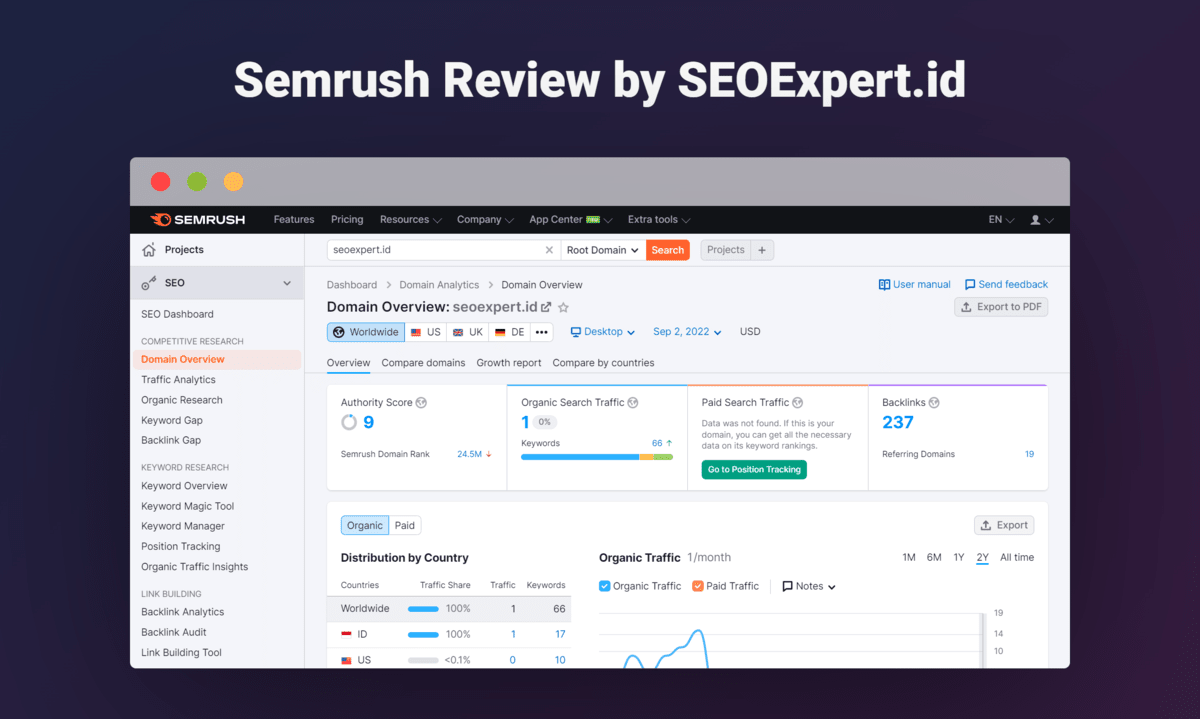In the digital age, establishing a strong online presence is paramount. For new websites, this begins with strategic search engine optimization (SEO).
DigitalOcean
DigitalOcean offers a variety of VPS hosting solutions perfectly suited for anyone seeking straightforward and budget-friendly computing power for their projects.
This article delineates nine critical steps to build a robust SEO fundamentals and foundation, ensuring your site’s visibility and security in a competitive digital landscape.
Our approach is analytical and data-driven, prioritizing strategic methods to achieve sustainable, organic growth.
Key Takeaways
Hide- Choose a concise and memorable domain name with relevant keywords.
- Utilize SEO tools and platforms like Google Analytics and SEMrush for tracking and keyword research.
- Prioritize website speed and mobile optimization for better rankings and user experience.
- Conduct competitor research to understand keyword rankings, backlinks, and content strategies to inform your own SEO plan.
Embark on your SEO journey with confidence, leveraging these essential tactics to secure your website’s success.
How to Successfully Optimize a New Website for SEO
Optimizing a new website for SEO requires a methodical approach beginning with the selection of a domain name that is both memorable and rich in relevant keywords.
A well-structured site that facilitates search engine indexing can set a solid foundation for higher rankings, which is bolstered by the integration of essential SEO tools for ongoing analysis and optimization.
Additionally, prioritizing site speed and mobile responsiveness, coupled with an informed understanding of competitors’ SEO traffic hacks and tactics, can significantly enhance a website’s visibility and searchability in a crowded digital landscape.
1. Choose the Optimal Domain Name
Selecting an appropriate domain name is a foundational step in establishing a strong SEO presence for any new website.
The domain name not only serves as a digital address but also as a branding tool that can significantly impact website SEO.
When pondering how to SEO a website, consider a domain that is concise, memorable, and relevant to your content or business.
Including keywords within the domain can fortify relevance and aid in SEO for a new website. Data-driven strategies recommend a balance between brand identity and search optimization to maximize visibility.
Safety in domain choice refers to selecting a reputable domain extension and avoiding names that may be associated with malicious activities or be too similar to established brands, thus ensuring your SEO for new website efforts are built on secure and ethical foundations.
2. Create a Search Engine Friendly Site Structure
Crafting a site structure with intuitive navigation and clear hierarchy is paramount in optimizing a new website for search engines.
Implementing website SEO optimization begins with a foundation that facilitates ease of crawling and indexing by search engine bots.
Strategic planning of the site’s architecture involves categorizing content logically and ensuring that each page is accessible with minimal clicks from the home page.
This not only enhances user experience, promoting a sense of safety through straightforward navigation, but also signals to search engines the relevance and importance of pages, aiding in new website SEO.
Data-driven approaches in how to SEO website demand the use of breadcrumb trails, clean URLs, and a responsive design, ensuring compatibility across devices.
Realizing how to do SEO for website entails meticulous sitemap creation and submission to search engines, thus bolstering SEO for website and fostering optimal discoverability.
3. Install Key SEO Tools and Platforms
Harnessing the power of SEO tools and platforms is a critical step in the optimization of a new website for search engines. A strategic approach involves selecting tools that deliver actionable data and insights.
Google Analytics and Search Console are foundational for tracking website traffic and performance.
Keyword research tools like SEMrush or Ahrefs offer competitive intelligence and keyword planning, crucial for crafting an SEO strategy grounded in real-world search behavior.
Additionally, implementing technical SEO tools such as Screaming Frog can uncover issues that may impede search engine crawling and indexing.
A data-driven methodology ensures that SEO efforts are secure and targeted, avoiding the pitfalls of guesswork and assumptions.
With these tools in place, the next strategic move is to ensure a fast and mobile-friendly website, which is pivotal for both user experience and search engine rankings.
4. Ensure a Fast and Mobile-Friendly Website
Prioritizing website speed and mobile responsiveness is crucial for improving a site’s SEO. This can be achieved by enhancing user experience and meeting Google’s performance benchmarks.
A data-driven approach to optimization involves rigorous testing and analytics monitoring.
Tools like Google PageSpeed Insights provide actionable insights to improve load times, which directly affect bounce rates and engagement metrics.
Strategically, it is imperative to adopt a mobile-first design rather than considering it as a mere recommendation. This is because mobile searches continue to surpass desktop searches.
With Google’s mobile-first indexing, the mobile version of a website serves as the starting point for inclusion in their index and as the baseline for ranking determination.
Therefore, ensuring a seamless mobile experience is essential for both visibility and user retention.
5. Research Your Competitors’ SEO Strategies
Understanding the SEO landscape involves analyzing competitors’ strategies to identify what is propelling their search engine rankings and online visibility.
To successfully optimize a new website for SEO, one must undertake a thorough competitive analysis.
This encompasses:
- Keyword Benchmarking: Determine the keywords for which your competitors are ranking. Use tools to analyze the search volume, keyword difficulty, and their content’s positioning for these terms.
- Backlink Profiling: Evaluate the quality and quantity of backlinks leading to competitor sites. High-quality backlinks from authoritative sources are significant ranking factors.
- Content Evaluation: Scrutinize the type, quality, and frequency of competitors’ content. Understand how it aligns with search intent and user engagement metrics.
Adopting a meticulous, data-driven approach ensures you can craft a strategic SEO plan that focuses on proven tactics while maintaining the integrity and safety of your website’s digital presence.
6. Conduct Thorough Keyword Research
Initiate your SEO efforts by conducting comprehensive keyword research to identify the terms and phrases most relevant to your website’s content and offerings.
This foundational step is crucial for crafting a strategic SEO plan that aligns with user intent and search engine algorithms.
Utilize robust analytics tools to gauge keyword volume, competition levels, and relevance.
This data-driven approach ensures you prioritize keywords that offer the best opportunity for ranking and align closely with your target audience’s search patterns.
Strategically integrate high-potential keywords into your website’s meta tags, headings, and content to enhance visibility.
However, maintain a balance to avoid keyword stuffing, which can result in penalties.
By meticulously researching and applying keywords, you create a secure pathway for organic growth and online success.
7. Produce On-Page Optimized Content
Producing content that aligns with keyword intent is critical for optimizing a new website. It ensures that the content meets the needs and expectations of the target audience, thereby enhancing user engagement.
Implementing on-page SEO best practices directly influences a website’s visibility and ranking on search engine results pages. This includes optimizing title tags, meta descriptions, and header tags.
A strategic approach to content creation, grounded in keyword research and on-page optimization techniques, sets the foundation for a strong SEO presence. It also drives organic traffic to the site.
Optimize Content for Keyword Intent
To effectively optimize content for a new website, it is imperative to align the substance of your articles with the specific search intent behind target keywords.
- Identify user intent by analyzing keyword metrics and trends.
- Tailor content structure to answer the query comprehensively.
- Monitor page performance to ensure alignment with user expectations.
This data-centric approach paves the way to incorporate on-page SEO best practices seamlessly.
Incorporate On-Page SEO Best Practices
Having established the foundation of aligning content with keyword intent, the next crucial step involves implementing on-page SEO best practices to ensure each page is fully optimized for search engines.
This meticulous approach prioritizes strategic placement of keywords, judicious use of meta tags, and the integration of optimized multimedia elements, all while maintaining a steadfast commitment to user engagement and content relevancy.
8. Build Links and Promote Your New Site
Amid the multifaceted approach to SEO, building a robust link profile for your new website is a critical step in bolstering its visibility and authority.
A strategic link-building campaign can not only enhance your site’s prominence but also ensure a secure and reputable growth in the digital ecosystem.
To optimize your website effectively through link building, consider the following:
- Create High-Quality Content: Generate informative and valuable content that naturally attracts backlinks from reputable sources.
- Network with Industry Influencers: Engage with industry leaders and influencers to earn authoritative links, which signal trust to search engines.
- Utilize Social Media Platforms: Promote your content across social media to increase visibility and encourage organic sharing, leading to natural backlink generation.
Moving forward, the focus must shift to monitoring and continuously improving SEO to sustain and build upon these foundational efforts.
9. Monitor and Continuously Improve SEO
Following the establishment of a solid link profile, it is imperative to regularly monitor and refine your SEO strategies to maintain and enhance your website’s search performance.
Employing a meticulous, data-driven approach allows for the identification of trends, the understanding of user behavior, and the detection of potential areas for optimization.
| Metrics to Monitor | Actions for Improvement |
|---|---|
| Organic Traffic | Refine keyword strategy and optimize content |
| Bounce Rate | Improve user experience and page load speed |
| Conversion Rates | A/B test landing pages and calls-to-action |
Conclusion: Follow the Steps to Build your SEO for a New Website Right Away
In conclusion, the optimization of a new website for search engines requires a strategic approach. This approach encompasses thorough SEO strategies with keyword research, content excellence, technical SEO, mobile responsiveness, user experience, link building, social media integration, analytics tracking, and ongoing updates to improve SEO rankings.
Adherence to these imperative steps ensures that a website is well-positioned for visibility in search engine results.
This, in turn, facilitates organic traffic growth and enhances the website’s authority within its respective domain.




